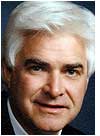Mar 18, 2008A New Jersey orthopedic surgeon says he has developed an RFID-enabled device that can measure and transmit data regarding the condition of the tissue around an implant, as well as whether the implant is functioning properly.
The device, designed by Lee Berger, a senior partner at Orthopaedic Associates in Fair Lawn, is based on patent 7333013, granted to Berger in February by the U.S. Patent and Trademark Office, for orthopedic implants using RFID technology to help patients and physicians track healing around an implant.
Berger, who describes himself as an inventor as well as a surgeon, says he has been working with the concept of linking RFID technology with surgical implants for about 10 years. Now that the patent has been granted, he hopes to develop partnerships with RFID and implant vendors to begin producing hip or knee joint replacements or spinal implants, including rods, plates and screws that come with RFID tags and sensors embedded in them.
Berger envisions employing sensors to measure pressure on the implant, as well as chemical balance, temperature and the presence of microorganisms around the device after it has been surgically attached to a patient. Sensors would measure pressure to determine if the implant has shifted, and would gauge the other factors to track the presence of an infection. The sensors would be wired to an RFID chip, which would transmit the sensor data to an RFID interrogator used by a physician.
What's more, Berger says, the implant features an electric stimulator wired to the RFID chip. In response to instructions from the reader, the stimulator can generate 20 to 40 microamps of electricity. The electric current passes through the bone in which the implant is attached, to promote healing.
Although Berger's prototype uses generic passive EPC Gen 2 UHF RFID tags and sensors attached to an orthopedic bolt, he says the tags and sensors could fit on any of the orthopedic implants he typically uses. In the future, he notes, the system could be implemented with tags of a variety of frequencies, to suit the implant's intended purpose. Each device's RFID chip would have a unique ID number, he says, which would be linked to data such as when the device was implanted, the type of implant it was and who conducted the surgery.
Because only the ID number would be stored on the RFID chip, and since any associated data would be password-protected in a back-end system, Berger says the chip would not be a privacy concern for implant wearers. "Confidentiality is very important to me," he states. He estimates the cost would be low for the added RFID chip, sensors and bone-growth stimulator, though he adds that it's too early to know for sure.
"I think RFID tags could be very inexpensive, and the waveform generators could also be very inexpensive," Berger says. "I've been working on this for about 10 years, and it will still require more development, but it shouldn't be hard to do. The technology is out there—it's just a matter of combining it all together."


